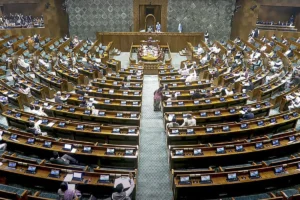
Pakistan Crisis
Pakistan Crisis: Pakistan is shrouded with dense clouds of economic crises. The country’s financial situation has been out of shape for the past few years, but its problems aggravated in 2022. Ahead of the crisis, several shopping malls and other public places are shut to save energy import bills. The prices of daily essentials such as flour, sugar and ghee have reached heights. Currently, Pakistan is struggling to combat growing debt, global inflated energy import costs, downfall in GDP (Gross Domestic Product), foreign exchange reserves, political instability etc.
Amid the downfall, Prime Minister Shehbaz Sharif led-government will take measures like ordering shopping malls and markets to shut by 8.30 PM and restaurants by 10.00 PM to save energy consumption.
Food Shortage In Pakistan Amid Crisis
Due to a major economic crisis, the Pakistan Government has auctioned a Pakistani embassy property in the US a few days ago. Moreover, Lahore city is facing massive storage of flour where the prices have shot up drastically with non-availability in most shops.
With such a shortage, the price of a 15 kg flour bag went up to Rs 2,050, after an increase of Rs 300 in two weeks, said a Pakistani news outlet ARY News. Also, the government hiked the prices of sugar and ghee by 25 percent to 62 percent for sale through the Utility Stores Corporation (USC), a media report said.
Also Read: Pakistan Economic Crisis: Imran’s Cry For Help, No flour In Lahore, Prices Of Sugar-Ghee On Sky
Pakistan Stance On Various Sectors
Pakistan is heavily dependent on imported fuel. The government has also ordered all central government departments to reduce energy consumption by 30 percent. These measures are directed to help the country save 62 billion Pakistani rupees ($274 million), according to a tweet by the country’s ruling party. The situation has prompted analysts to draw comparisons with a similar crisis faced by India’s other neighboring nation Sri Lanka earlier last year.
Pakistan’s total liquid foreign exchange reserves fell to $11.7 billion in December, said the central bank. The International Monetary Fund (IMF) over a review process, which has delayed the release of a $1.1 billion bailout tranche.
The country is also suffering from floods that hit the country in 2022 from June to October, which affected nearly 33 million people and according to reports, are believed to have led to damages worth over $30 billion. The flood, in fact, increased Pakistan’s dependence on imports even as the country’s exports dipped. As per the Pakistan Bureau of Statistics, the country’s trade deficit stood at over $2.8 billion in December 2022 as exports declined by over 16 percent to $2.3 billion. Further, the Pakistani Rupee too is falling nearly 30 percent in 2022, compared to the US dollar.
To read more such news, download Bharat Express news apps





















